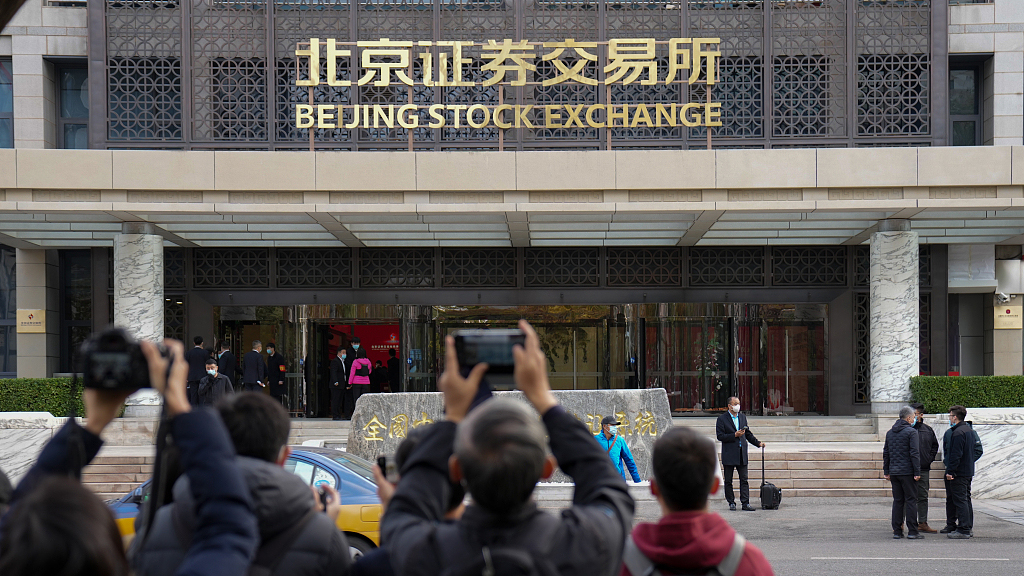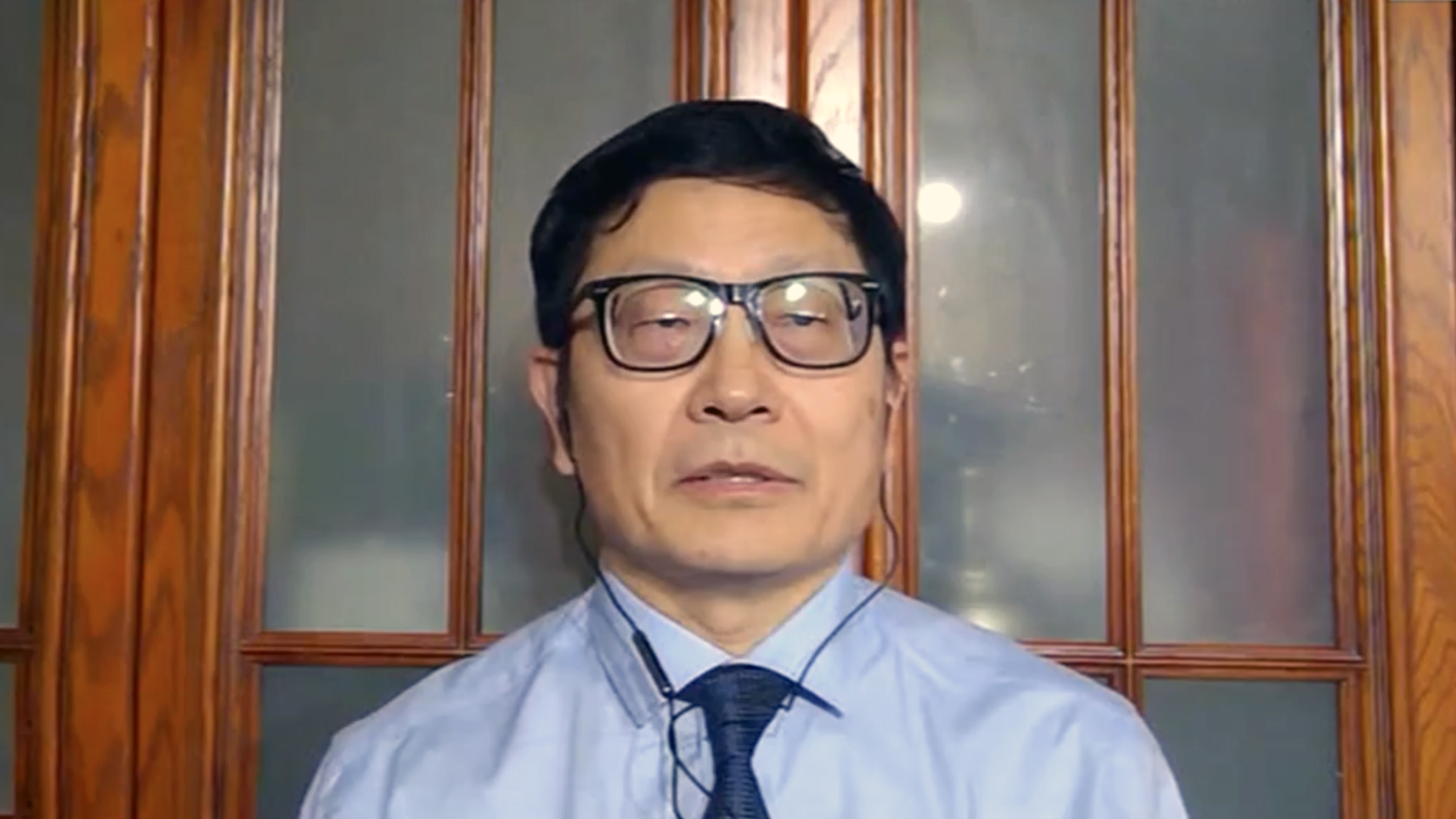02:14

As the Beijing Stock Exchange began trading on Monday, China now has three national stock exchanges, with the existing two in Shanghai and Shenzhen. They each have a set of preferences to cater to different funding needs, and together, make the country's capital market more complete.
Size is the most noticeable difference among them. The youngest bourse in Beijing saw 81 stocks debut on the first day, while its peers the Shanghai Stock Exchange and Shenzhen Stock Exchange – which both started trading back in 1990 – house over 2,000 companies apiece. The current market caps of the Shanghai and Shenzhen stock exchanges easily rank them among the world's top 10 trading floors.
The biggest difference actually lies in their top-down planned structure designs, which started around 2000 when the China Securities Regulatory Commission directed Shenzhen to prepare for a new board to better fund smaller companies.
The Shenzhen bourse opened the board for small and medium-sized enterprises (SMEs) in 2004, and the ChiNext board in 2009, which features startups. Gradually, Shenzhen became the "go-to" place for smaller-sized companies planning an initial public offering (IPO). In contrast, the Shanghai Stock Exchange gathered big companies with strong profitability – or the so called "blue-chips."
In recent years, China's stock market reform has continued to support quality growth. For example, Shanghai unveiled the Nasdaq-style STAR Market in 2019 to spur innovation. Shenzhen also merged its main board and SME board earlier this year to reduce overlap.
04:11

"Shanghai now features traditional business and new technology leaders; Shenzhen is more growth-oriented and prefers foreign trade or Greater Bay Area-related stocks," Wang Jianhui, research and development manager at Capital Securities, told CGTN.
Wang believed there was a special layer missing to present leaders in the high-tech industry.
This is where the Beijing bourse fits in. The newest stock exchange intends to make it easier for SMEs from tech-related fields to raise funds by setting a lower listing bar compared with Shanghai and Shenzhen, including by lowering the post-IPO equity share capital from at least 50 million yuan ($7.84 million) to 30 million yuan.
It is located on the existing Select Tier of the National Equities Exchange and Quotations (NEEQ), China's over-the-counter system for trading the shares of a company that is not listed on the exchanges, and selects participants only from the NEEQ's Innovation Layer to ensure quality and the tech DNA of a company.
Zhang Shiyuan, chief researcher at Southwest Securities, said that the basic and innovative layers of the NEEQ are like "a big school" that trains specialized and innovative SMEs for the new bourse.
"From the two existing tiers, the Beijing Stock Exchange can continue to select 'specialized and new' companies that have been tested in the capital market," Zhang said.
Indeed, 71 out of the first batch of 81 companies trading on the Beijing Stock Exchange today were directly transferred from the NEEQ's Select Tier. They are primarily from information technology, pharmaceuticals and high-end machinery sectors. These 81 companies had an average return on equities of 11.59 percent, higher than companies on the STAR Market.
Wang is confident that the new bourse could boost innovation as the policymakers wanted.
"A new stock exchange means new opportunities for institutional investors. So the institutions will invest more in potential candidates on the new board for higher returns in the future. Eight broker-dealers are setting up equity investment funds just for this purpose. It means more tech-centric SMEs are going to get incentives from financial institutions," he said.

